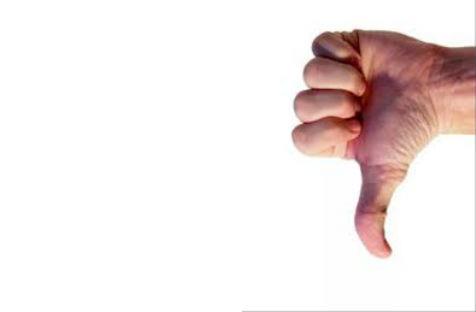All critics are equal but some critics are more critical then others.
At the recent IETM network meeting in Dublin, a session called What is the role of the critic? was high on my agenda. It’s something I always question
The session brought together: moderator Martina Marti, a theatre practitioner, producer and translator (Finland); Peter Crawley, theatre critic for The Irish Times and News Editor for Irish Theatre Magazine (Ireland); Esther Boldt, writer & theatre critic (Germany); Oblivia, Artistic Director and Performer (Finland), and Grace Dyas – playwright, director, producer and one third of THEATREclub (Ireland).
The panel questioned whether reviews were a commentary on the role of culture in society or just a ticket seller. With the rise of audience development initiatives and social media, what role do critics now play in the conversation about culture?
The critics and artists debated the issues of trust and power in the media, the role artists play in conversations about their own work and, of course, what the future holds.
I was inspired enough after this session to try and replicate this session in my home town of Melbourne sometime soon, where I was recently reminded that the broadest-reaching forums of critical reviewing (in my opinion) is rather shallow and at times, intellectually limited, residing in news publications such as The Age and The Australian; The Herald Sun having forsaken arts reviewing for its readers. The Blogosphere is the one forum to get a fix of critical art reviewing but even that is flooded with whatever.
The panel members were all asked to respond to a performance or work of art that impassioned them but not name the work. After listening to their narration of their impassioned moment in the face of art, the audience was asked to write down which speaker they trusted the most. Ninety percent chose the only artist on the panel, rejecting the professional critics.
The response was even more striking when artists in the room were asked to raise hands if ever having fallen victim to the star-ranking-system-out-of-5 promoted by newspaper publications. The entire room did indeed wave their delicate hands. Unanimously we all agreed this third-tier star-ranking system is a non-productive critical assessment of art that only cements the reviewer’s opinion and is unproductive all round in terms of judging the quality, intent and achievements of artists. Really the use of this system has to cease if there is to be any trust gained or respectability around the profession of arts journalism from the artist’s perspective.
More to the point, it’s the responsibility of the newspaper to ask their reviewers to write an intelligent and comprehensive insight into any creative performance for the public reader.
As an artist, audience member and critic, I find that now that when I am watching any type of performance work, it challenges me to find new ways to talk about the notions of “experimental” whether in relation to the work I am watching, my own or others. I move around contemporary art/performance/museum/gallery spaces and more traditional narrative theatre/dance venues. I critique (in my mind) the artist’s ability to find new ways to demonstrate and reveal the familiar, using unexpected and challenging methods to push the audience to see, and new ways to communicate their art.
When I opened Melbourne’s Age last March to read a review of my company’s latest work And All Thing Return To Nature Tomorrow and read comments by critic Jordan Beth Vincent that was so negative about the work with a 1 star rating, I was deeply perturbed. The impact this has on the artists after a prolonged, deeply committed and intensive work period is considerable. To a list of concerns not detailed here and including not bothering to actually critique Brooke Stamps’ contribution of incredibly spirited choreography to the performance – her first major work and something to be lauded, I and the rest of the cast could only be offended by such willful negativity.
What good does this do anybody but perhaps satisfy the ego of the reviewer, publicise her dislike but not her skill in critiquing, whilst painting a negative view for the reader without substance – towards artists working hard to create a culture that embraces risk, new form, new expression? Why cannot the major dailies aim for a more coherent and constructive dialogue with the great culture of our city? Melbourne is, after all, a city for the arts. Do the dailies think we don’t require a more rigorous forum around dance, the arts and its cultural contribution to our civic life?
Thank God for other forums and other critics online including publications like Realtime Magazine’s engaging critical dialogues and progressive arts reviewing across all platforms of art marking.
So the questions I pose to the reader: What is a critic? What is an audience? How does performance operate, what can it do and be? What are the component parts of the arts ecology, how do they fit together and what role does criticism play? A new forum of constructive arts criticism and reviews is now seen in the growing influence of blogs, chat rooms and message boards devoted to the arts, giving the local professional critic a slew of competitors… Many arts institutions and companies even allow their audience members to write their own critiques on the organizational website. But what about the dailies? Don’t we want better in our last bastions of printed mass media? That’s a 1 star from me at the moment.
In defence of star ratings: ArtsHub Reviews Editor Richard Watts responds.





